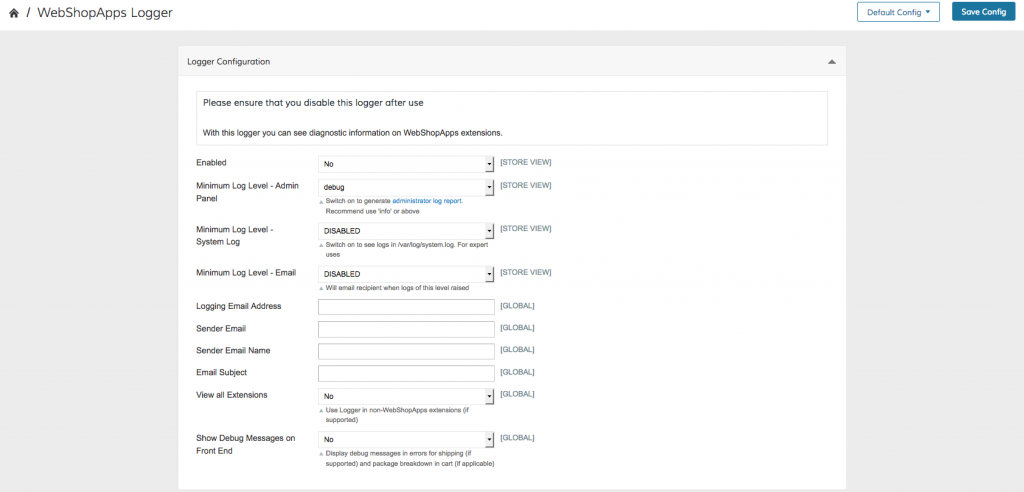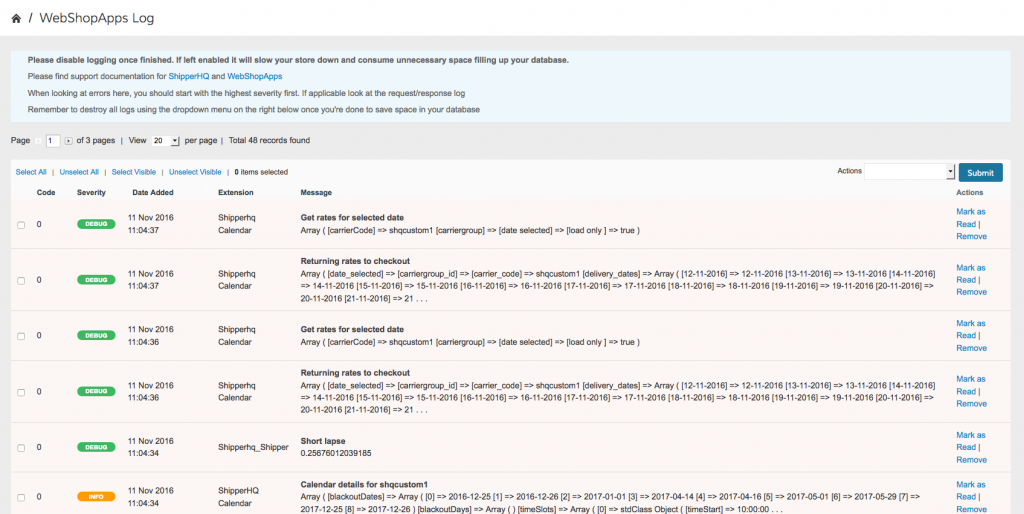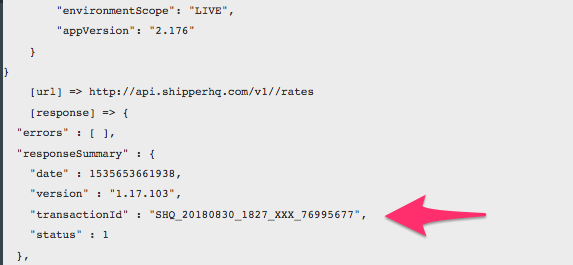Logger Overview
The ShipperHQ extension comes with the comprehensive WebShopApps Logger. This enables you to inspect the workings of the extension, and if necessary, provide logs when raising support calls. We have created a screen cast which walks through how to use the WebShopApps Logger. This is based in Magento, but the principle is the same.
.
Manual Configuration of the Logger
Key Features
The logger gives you the following capabilities:
- Dedicated log panel within admin, no need to open log files
- Ability to set logging level to show more/less logs
Additionally we have added the following functionality:
- Runs asynchronously, reducing impact on performance to a minimum
- Ability to switch off when in production, will not affect performance at all
Configuration
The Logger is configured under Settings -> Shipping Methods -> ShipperHQ. Click the Configure button. You will need to scroll to the bottom to find the section called Developer Use Only. In that section is a link to “Edit Log Settings.”
When your site is switched to production/live, please clear out all logs and disable WebShopApps Logging otherwise your database/file system will fill up and it will slow down your store.
Ensure you choose Shipperhq_Shipper as the extension to log output from!
Once you have set up the logger configuration, you will need to get a shipping quote in cart or checkout with the items in the cart that highlight the issue.
Where Do I Find the Logs?
Logs will by shown under Settings -> Shipping Methods -> ShipperHQ->Configure. Go to Developer Use Only again but this time click on View the current log report.
An example output will be a grid of logs. Depending on the log level set you will see more/less logs. You will most likely want to look at the log called “Rate request and result”.
What level of logging do I need?
There are 4 levels of logging you can choose, choosing one will include all levels above it, i.e. if you choose debug then info, warning, critical will also be captured.
| Level | Description | Recommended for |
|---|---|---|
| Critical | Displays critical issues such as unable to process data | Useful in testing, set to log to email and receive notifications of any issues found. Don’t see this as a replacement for actual manual testing though! |
| Warning | Displays warning messages, e.g. a rate cannot be found for this zipcode | Useful to highlight any issues in testing |
| Info | Gives high level informational messages in a format that can be understood | When you want useful information on the working of the extension |
| Debug | In depth technical information on an extension | Expert users only, much of information will not make sense, this is primarily used by WebShopApps to see debugging. You may be asked to create debug logs to send to WebShopApps so we can see your configuration setup |
How to find a Transaction ID in the logs
The Transaction ID is used by our support team to get into the issues faster. By providing this, along with your support email we can start looking into the problem much faster. If you have already enabled the logs as described above, you can skip to step 6 below.
- Go to Settings > Shipping Methods > ShipperHQ > Configure > Developer Use Only > Edit log settings
- Under Logger Configuration, set Enabled to Yes
- Set Minimum Log Level – Admin Panel to ‘Debug’
- Under Extension(s) to log output from, ensure Shipperhq_Shipper is set to Enabled
- Save the configuration changes
- Perform the request or test that you are investigating
- Go to Settings > Shipping Methods > ShipperHQ > Configure > Developer Use Only > View the current log report
- Open the entry titled “Rate Request and Result”
9. Scroll down until you see the field ‘transactionId’, within the response. Use cmd-f (if mac), or ctrl-f on others. Then type “transaction” and the Transaction ID is found.
10. Copy this number, along with a description of the problem you’re having to the support team so they can begin to diagnose the issue.
11. Once you have this information, remember to disable the WebShopApps logger as per steps 2 and 3
Please remember to turn the logger off, it does not need to be constantly running. If left running it will slow down your shipping rates exponentially.




